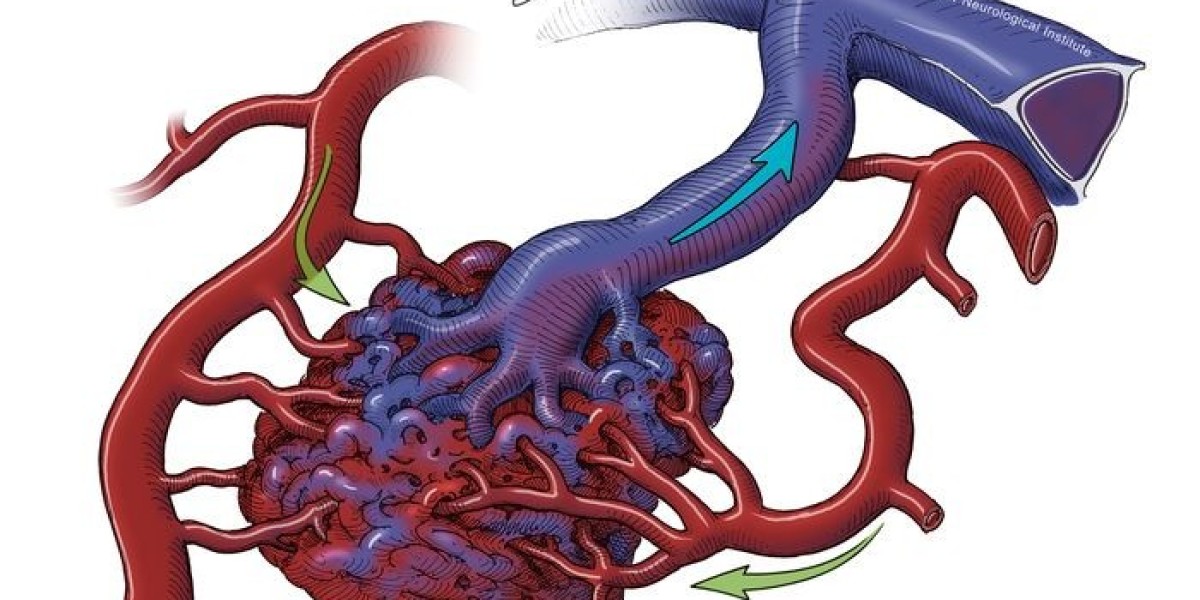At SGVascularCtr, we aim to shed light on various vascular health conditions, with a special focus on vascular malformation and uterine fibroids. Both of these conditions may affect individuals' quality of life, causing pain, discomfort, and even significant complications. In this article, we will explore the causes, symptoms, and treatment options for these conditions to help you understand them better and take informed steps toward seeking medical care.
What is Vascular Malformation?
Defining Vascular Malformation
Vascular malformation refers to an abnormal formation or development of blood vessels. It occurs when blood vessels do not form properly, resulting in various symptoms such as swelling, pain, and in some cases, skin discoloration. These malformations can occur anywhere in the body but are most commonly found in the limbs, face, or internal organs.
There are different types of vascular malformation, including:
Arteriovenous malformation (AVM): Abnormal connections between arteries and veins, leading to the bypassing of capillaries.
Venous malformation: Enlargement of veins, which can cause pain, swelling, or a visible mass.
Capillary malformation: Tiny blood vessels form abnormally, leading to red or purple skin discolorations, often called "port-wine stains."
Lymphatic malformation: Lymphatic vessels, responsible for transporting lymph fluid, fail to develop correctly, leading to swelling or fluid retention.
Symptoms and Causes
The symptoms of vascular malformation can vary depending on the type and location of the malformation. Common symptoms include:
Visible swelling or lump in the affected area
Pain or discomfort, especially when pressure is applied
Skin discoloration or visible veins
Bleeding in severe cases, particularly in arteriovenous malformations
The exact cause of vascular malformations is not always clear, but they often result from genetic mutations or developmental issues during pregnancy. Some cases may be hereditary, while others may develop later in life.
Treatment Options for Vascular Malformation
The treatment for vascular malformation depends on the type, severity, and location of the malformation. Options include:
Surgical intervention: In some cases, surgery may be required to remove or repair the abnormal blood vessels.
Endovenous procedures: Minimally invasive treatments, such as sclerotherapy or laser therapy, can be used to treat certain types of malformations, particularly venous malformations.
Embolization: This procedure involves blocking the abnormal blood vessels to reduce blood flow and alleviate symptoms.
Medications: Pain management or anti-inflammatory drugs may help relieve symptoms, especially if surgery or invasive treatments aren't needed.
If you experience swelling, pain, or noticeable changes in your veins, seeking medical advice from a specialist like SGVascularCtr is essential for proper diagnosis and treatment.
Understanding Uterine Fibroids
What Are Uterine Fibroids?
Uterine fibroids are non-cancerous tumors that develop in or on the walls of the uterus. These growths are common, affecting a significant number of women, especially during their reproductive years. Although they are typically benign, fibroids can cause various symptoms, ranging from mild discomfort to severe health problems.
Fibroids can vary in size, shape, and location within the uterus. They are classified into several types based on where they occur:
Subserosal fibroids: Located on the outer wall of the uterus.
Intramural fibroids: Found within the muscular wall of the uterus.
Submucosal fibroids: Grow into the inner lining of the uterus, potentially affecting menstruation and fertility.
Pedunculated fibroids: Attached to the uterus by a stem-like structure.
Symptoms and Causes of Uterine Fibroids
Many women with uterine fibroids do not experience symptoms, but those who do may encounter:
Heavy or prolonged menstrual periods
Pelvic pain or pressure
Frequent urination or difficulty emptying the bladder
Pain during intercourse
Lower back pain
Fertility issues in some cases
The exact cause of uterine fibroids is unknown, but several factors may contribute to their development. These include:
Hormones: Estrogen and progesterone may promote the growth of fibroids.
Genetics: Family history of fibroids can increase the risk.
Age: Fibroids are more common in women aged 30 to 40.
Race: African-American women are more likely to develop fibroids, and they tend to have more severe symptoms.
Lifestyle factors: Obesity, high blood pressure, and diet may play a role in fibroid development.
Treatment Options for Uterine Fibroids
Treatment for uterine fibroids depends on factors such as the size and location of the fibroids, the severity of symptoms, and whether the woman is trying to conceive. Treatment options include:
Medications: Hormonal therapies or other medications can help manage symptoms, such as heavy bleeding or pain.
Non-invasive procedures: Techniques like MRI-guided focused ultrasound can target and shrink fibroids without surgery.
Surgical options: For more severe cases, a hysterectomy (removal of the uterus) or myomectomy (removal of the fibroids) may be necessary.
Uterine artery embolization: A procedure where blood supply to the fibroids is blocked, causing them to shrink.
It is important for women experiencing symptoms of uterine fibroids to consult a healthcare provider for a proper diagnosis and discuss the best treatment options for their specific situation.
Vascular Malformation and Uterine Fibroids: Common Ground
Although vascular malformation and uterine fibroids are distinct medical conditions, they share some commonalities. Both can lead to pain, swelling, and discomfort, significantly affecting the quality of life for those who suffer from them. Additionally, both conditions are treatable, with a range of options available depending on the severity and location of the malformations or fibroids.
For those who suspect they may have either condition, seeking specialized care from a healthcare provider like SGVascularCtr is crucial. A timely diagnosis and appropriate treatment can help manage symptoms, prevent complications, and improve overall health outcomes.
Conclusion: A Forward-Looking Perspective
As medical research continues to evolve, there is hope for more effective treatments and therapies for both vascular malformation and uterine fibroids. Patients can look forward to more personalized, less invasive treatment options that will help manage these conditions with minimal disruption to their daily lives.
Understanding the symptoms, causes, and treatment options for these conditions is the first step toward regaining control over your health. Whether you're dealing with vascular malformation or uterine fibroids, don't hesitate to seek the care you deserve. At SGVascularCtr, we are committed to providing cutting-edge treatments and compassionate care to help you live a healthier, more comfortable life.









